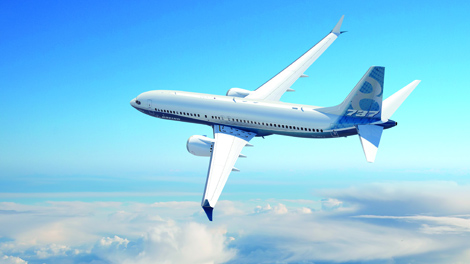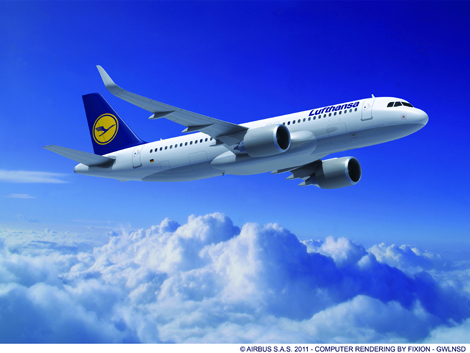Neil Churchill visits Boeing’s headquarters to hear the aircraft manufacturer confidently claim it can take on Airbus’ Neo
As it looks to recover lost ground to Airbus, Boeing has admitted it was slow to react to the changing narrow-body commercial jet market. The US plane manufacturer is hopeful its 737 Max will catch up with its European rival’s A320 Neo in terms of orders, but needs to win more than 50 per cent of the market share in the future.
Marty Bentrott, vice-president of sales, Boeing Commercial, said: “We were late to the game with the 737 Max. Airbus has sold more than 2,000 Neos, and we’ve sold 1,500 Maxs so we’re behind. But since we launched the Max it’s been about 50/50 market share.”

Speaking to a select group of Middle East media in Washington DC, Bentrott defended the MAX’s capabilities despite coming late to the game.
“The Max 737 8 seats more passengers than the A320 Neo and it is about eight per cent more efficient than the Neo [because of] its lighter weight, and it has newer technology engines. The competition for any business in the single aisle is going to be very fierce. We have to be successful in terms of the value proposition for the Max versus the Neo and preserve relationships with customers who are already flying 737s.
“To maintain this equilibrium of about 50/50 market share, we need to win more than 50 per cent of the business going forward because Airbus had a head start. So it’s going to be a challenge but we’re confident… it flies farther, has better performance, and of course you get the long-term reliability and maintainability of a 737.”
In terms of the Max’s design, Boeing draws excessively from what it has learnt when developing the 787 Dreamliner. In addition to the all-new overhead bins and LED lighting, Boeing also produced a new type of wingtip device that promises to deliver 1.5 per cent improvement in fuel economy over the 12 per cent improvement already expected for the Max when compared to the current 737 line.
The engines of the Max have received a complete overhaul, being larger but lighter than existing 737 engines and thereby operating more efficiently and over longer distances. With a range of up to 7,038 km, the single-aisle aircraft could easily operate long-haul services from, say, Hong Kong to Dubai or Perth.
Boeing says that the flight deck of the Max will closely resemble that of present-day 737s to maintain commonality with the whole 737 family. This leads to additional savings for current 737 operators switching over to the Max as flight crews and engineers will not need to be re-trained to work on the Max.
But with more orders on its books, Airbus can afford to be bullish on predicting the future of the narrow-body market.
Speaking earlier this year, Fabrice Brégier, president and chief executive of Airbus, drew laughter with his honest assessment of Neo-versus-Max, and said the company is looking towards the East and to Asia for future growth.
“We have the lion’s share regarding the single aisle market. Will it continue? We will see. We are not just driving sales with market share in mind. Everybody knows that Neo is better than Max,” Brégier told journalists in Toulouse, France.

This year Airbus says it will achieve 50 per cent market share in China and is naturally confident of the country’s outlook in the next few years – but India is also in its sights following the recent deregulation.
“It can only benefit from that because the Indian market is, at this stage, not at the same level as the Chinese market, but on paper there is no reason that the growth that Chinese airlines enjoy cannot be the same in a few years in India,” Brégier continued.
India’s largest airline, Indigo, as well as rival Go Air, have both said they will make the transition from the A320 family to the Neo. Both carriers have placed firm orders for 160 and 72 aircraft respectively.
Air Asia, which was among the first to recognise Asia’s vast potential for growth in the low-cost market, will be one of the launch customers of the Neo. “There is a market of 600 million people in Southeast Asia and we have a huge potential to fly to places that people have never flown before,” Tony Fernandes, chief executive of Air Asia, explained when signing a record-breaking firm order for 264 Neos. Subject to government approval, the airline is launching Air Asia India in 2014, adding to already existing bases in Malaysia, Thailand, Indonesia and the Philippines.
The Neo will boast new engines and sharklets plus Airbus’ large wingtip devices that together are said to deliver fuel savings of 15 per cent and additional range capability of up to 950 km over existing A320 models. “The commonality between the current A320 family and the Neo will be over 95 per cent, enabling it to fit seamlessly into existing A320 family fleets,” Airbus announced at the launch of the Neo.
Aside from the narrow-body market, competition between Boeing and Airbus rages on through the twin aisles with the next decade of orders set to be determined by the 787 Dreamliner, Airbus A350 and the future 777X family.
It is the latter that has drawn increasing attention recently, with Emirates and Qatar Airways placing firm orders for 200 aircraft of the 777X family at the Dubai Airshow last November. This comes in addition to orders placed by Lufthansa and Etihad, which makes it the biggest commercial launch in commercial jetliner history according to Boeing.
The 150-jet order for the 777X from Emirates, valued at around US$45 billion, is by far the largest single order in the history of Boeing. “When you look at our product portfolio, clearly the dominant product and the product of choice by many of our customers in the region has been the 777,” said Boeing’s Bentrott regarding the 777X’s feasibility in the Middle East.
“Emirates is our largest 777 customer in the world, with more than 125 aircraft in service and there’s hardly a month that goes by without us delivering a new 777 to Emirates. Those airplanes are phenomenal for them,” he added.
To secure the monumental deal with Emirates, Bentrott revealed that Boeing had to meet requirements issued by Emirates. “We have been actively engaged with Emirates in the next generation 777 and as the largest 777 customer in the world, the airline deserves our focus and our attention,” he said. “From our standpoint, this family of airplanes needs to be effective for Emirates and their business plan. Emirates has a 777 replacement cycle starting towards the end of this decade and they expect us to provide them an airplane that’s much more efficient than today’s 777, with even more capabilities. We have been working closely with them to be certain we are meeting their expectations with the design of this airplane.”
The rivalry between Airbus and Boeing remains as fierce as ever. Looking at the B737 Max versus the A320 Neo, one cannot help but wonder: are they that different? Both manufacturers have come a long way developing their narrow-body commercial jetliner programmes. Considerable achievements have been made in terms of plane design, range and capacity. Never before in aviation history have we seen single-aisle aircraft that offer operators such range, seating and cargo capacity and comfort.
It is difficult to judge which aircraft is superior. For existing operators of the B737 series, a switch to the Max will certainly be advantageous due to commonality reasons. Crew selection and training are costly elements in every airline’s operations. Certifying crews that are used to flying and maintaining the 737 for flying the Max will take just a few days as opposed to months for those unfamiliar with the family.
However, the exact argument holds true for the current A320 series and a switch-over to the Neo. Studying both manufacturers’ order logs, it soon becomes apparent that traditional Boeing operators are ordering the Max, while long-term Airbus operators are choosing the Neo.
As this issue went to press, the Neo is currently leading the race with 2,532 orders, while the Max has logged 1,639 orders. With the Neo’s maiden flight scheduled for autumn this year – two years ahead of the Max – its lead in what might easily be described as a game between two giants is easily explained.
With orders from traditional Boeing customers such as Ryanair, Garuda Indonesia and Copa Airlines imminent, it remains to be seen whether Brégier will still be able to draw laughter at Airbus’ next assessment of Max versus Neo.
Additional reporting by Dominic Lalk








